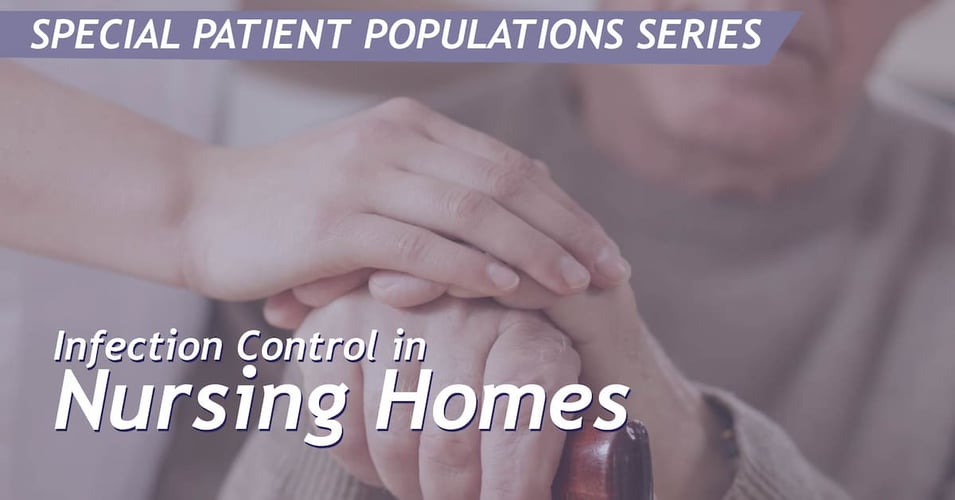DALYs and QALYs + HAIs: The Costly Connection

 In our previous posts about DALYs and QALYs, we have defined the terms and presented how the healthcare field calculates these two measures of disease burden. In today's post, we will narrow our view to just hospital-associated infections and their disease burden. After reading this post, you should have a more detailed picture of the impact HAIs have on American lives.
In our previous posts about DALYs and QALYs, we have defined the terms and presented how the healthcare field calculates these two measures of disease burden. In today's post, we will narrow our view to just hospital-associated infections and their disease burden. After reading this post, you should have a more detailed picture of the impact HAIs have on American lives.
The use of DALYs and QALYs intersects with infection control and prevention any time a cost analysis is conducted. These two measures allow decision-makers to determine the disease burden on their bottom line as well as on the quality of life of their patients, in a first step towards drafting a mitigation strategy. Once several interventions are proposed, several approaches are possible.
A cost-minimization analysis can be used when comparing interventions whose clinical benefits are the same, and only the costs are different. This is the simplest type of cost analysis, as the fewest attributes are considered.
A cost-effectiveness analysis uses clinical outcomes as a point of comparison, examining each intervention in terms of life years gained or infections avoided. The challenge of this analysis is that researchers do not always use the same clinical measures.
A cost-utility analyses is similar to the cost-effectiveness analysis, but adds quality of life to the calculation. The use of this standardized measure allows for more direct comparisons between interventions... but only if the QALY was estimated in the research.
FURTHER READING: Is it cost-effective? 3 Key Elements To Know for Sure
And this brings us to the future of infection control research and economic analysis. A growing number of researchers are pushing for the more standardized approach of integrating QALYs into every economic analysis of interventions. Instead of examining only the change in financial costs due to an intervention, this will also consider the health costs as well.
| IN SHORT... |
| Why are QALY measures rare in infection control research? |
| 1. Few randomized-controlled trials |
| 2. Difficult to model disease transmission |
| 3. Wide range of estimated utilities for HAIs |
| 4. Duration of HAI can be too short for meaningful QALY |
Accomplishing this worthy goal will have its challenges. Cost-utility analyses are best conducted alongside randomized control trials, of which there are few in the field of infection control. Because there are so many different ways to prevent an infection, isolating target interventions is difficult to model. Additionally, the ways pathogens transmit within a healthcare facility are numerous and complex, involving the built environment, staff, patients, visitors, moving equipment, and room changeover. Even if modeling is achieved, however, the estimates for "utility" for hospital-associated infections (impact of HAIs on daily life) range widely between sources, meaning that the field cannot agree on the disease impact on quality of life. Finally, because hospital-associated infections are, in most case, a short-term condition (a shorter "adjusted health state"), calculating a QALY for such a relatively short time can result in a relatively small adjustment. This small change is more meaningful across populations, however, and some HAIs do have a longer reduced health state (such as Clostridium difficile Infection).
So what are the QALYs and DALYs for HAIs? Individual studies have come up with different burdens, which vary due to populations and infections. One large study in Japan, for example, found that hospital-acquired bloodstream infections (CLABSI) were responsible for 137.9 DALYs per 100,000 population, a number that was potentially impacted by the higher numbers of elderly in the population and the higher incidence of MRSA in Japan. A computer model study from 2010 demonstrated that the incremental cost-effectiveness ratio of a MRSA screening strategy was affordable in terms of QALY, which was part of a body of work that resulted in today's almost-universal MRSA screening of pre-operative patients. The closest we could get to a direct DALY-per-infection calculation, however, was a study using European data points. According to their calculations, for example, HAI pneumonia resulted in 67 years lived with disability (YLD) per 100,000 population, with 169 Disability-Adjusted Life Years (DALYs). Full data can be found here.
Determining QALYs and DALYs in HAI research can be extremely helpful when communicating the importance of effective and long-lasting interventions. These measures help demonstrate disease burden not just in terms of cost in dollars to hospital or taxpayer, but cost in weeks, months or years to the patient. Most importantly, they remind us that these costs are avoidable in at least 70% of HAIs, representing decades of years and billions of dollars lost each year. One ways they are avoidable is by removing reservoirs for pathogens and replacing them with biocidal surfaces. Copper-infused materials on bedrails, overbed tables, and workstations can kill bacteria before it has a chance to reach a vulnerable host and cause an infection. Investment in preventive biocidal surfaces is a long-lasting intervention, with no additional work required by staff, that can continuously avoid infection and therefore avoid disability and reduced quality of life.
Have you encountered QALYs or DALYs in your professional work? Share your experiences in the comments below!
![EOScu Logo - Dark - Outlined [07182023]-01](https://blog.eoscu.com/hubfs/Eoscu_June2024/Images/EOScu%20Logo%20-%20Dark%20-%20Outlined%20%5B07182023%5D-01.svg)




